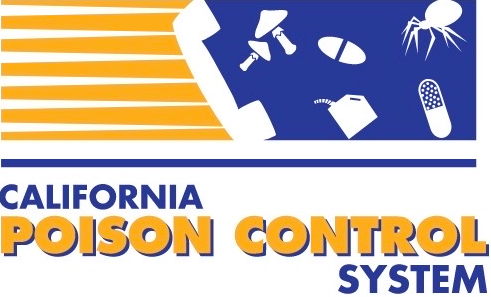By Jonathan D. Auten, DO, and Michael J. Matteucci, MD
Introduction
Methamphetamine, closely related to amphetamine, is a fat-soluble sympathomimetic agent that in users can produce symptoms as mild as restlessness, tachycardia, and headache to severe side effects such as agitation, delirium, cardiac ischemia, seizures, strokes, rhabdomyolysis and renal failure. Methamphetamine abuse has been rising over the past decade due to the relative ease of availability and low cost.
In the United States, methamphetamine abuse rose through the 1960’s despite prohibition of its unregistered possession, manufacture, or sale by the US Drug Abuse Control Amendment (USDCA) in 1965. This ban unfortunately promoted occult methamphetamine laboratories along the coast of California in the 1960s, and its recreational use spread up and down the Pacific Coast. In the 1980s, crystal methamphetamine, a smokable and more potent form was developed spurring a new epidemic of abuse. In 1996, the US Congress passed the Comprehensive Methamphetamine Control Act, enacting new controls over key ingredients such as iodine, red phosphorous, hydrochloric acid, and pseudoephedrine, while further restricting the sale, possession and manufacture of methamphetamine. Despite these measures methamphetamines are the second most abused illegal substances in the United States. Medicinal methamphetamines still have limited use in the treatment of narcolepsy, Attention Deficit Hyperactivity Disorder (ADHD), and obesity.
Case presentation
A 2-year-old child presented to the emergency department with a heart rate of 192, respiratory rate of 44, rectal temperature of 103.7F, and generalized seizures. The initial history by the parents was conflicting and unclear. The child required high doses of benzodiazepines to extinguish the seizures, endotracheal intubation, and external cooling. She underwent a septic workup including a CBC, urinalysis, chest radiograph, CT scan of the head, and lumbar puncture followed by admission to the Pediatric Intensive Care Unit. After continued conversations with the parents, a more thorough history was obtained. Approximately four hours before presentation, the toddler had picked up an aluminum wrapper with methamphetamine residual on it. The parents stated that a friend who had been smoking crystal methamphetamine in their home had left it there. Child Protective Services (CPS) was then contacted. The child had signs of acute renal injury with elevated serum creatine phosphokinase and a rising creatinine. She was treated supportively with intravenous fluids, benzodiazepines, and respiratory support.
On Day 2, the patient was extubated, but demonstrated waxing-and-waning lethargy, and confusion. Creatine phosphokinase (CPK) concentration peaked at 15,000 IU/L with a creatinine level of 1.9 mg/dL and began to trend downward. Renal function began to improve and dialysis was not required. She became normothermic and supportive measures were continued. On Day 3 she was transferred to a regular floor. She continued to improve and on Day 4 was discharged in the custody of CPS.
Questions
- Is the severity of this child’s overdose isolated to the pediatric community?
- What caused the child to have acute renal failure?
- What are the long-term effects of methamphetamine abuse?
Epidemiology
Nearly 25 million people worldwide are estimated to have used amphetamine or methamphetamine in the past 12 months, more than heroin or cocaine. Amphetamine and methamphetamine are the most widely used illicit drugs after cannabis. Amphetamine, methamphetamine, and derivatives of these drugs trigger the release of dopamine from neurons in the central nervous system (CNS), leading to feelings of euphoria. Methamphetamine’s duration of action may be significantly longer than other sympathomimetic agents; toxic effects such as paranoid delusions may persist for 15 hours or longer. Intravenous or smoked methamphetamine causes an abrupt “rush”; orally ingested methamphetamine may take about 20 minutes to induce symptoms. Smoking is therefore the most common route of abuse of these agents. Street names for methamphetamine include: crank, crystal, crystal glass, crystal meth, meth, cris, ice, speed, getgo, go fast, poor man's coke, redneck cocaine, working man's cocaine, hot ice, cristy, batu, LA glass, LA ice, quartz, and super ice.
The majority of methamphetamine users are white men 18 to 25 years of age, but the highest usage rates have been found in native Hawaiians, persons of more than one race, Native Americans, and men who have sex with men. High-risk sexual activity and transmission of human immunodeficiency virus have also been shown to be associated with methamphetamine use. Use of methamphetamine in women who are pregnant may cause placental abruption, intrauterine growth retardation, and preterm birth. The production of methamphetamines requires a variety of metal salts, and lead toxicity from incorrectly produced drug has been reported. The production of methamphetamine in occult residential laboratories has also led to caustic ingestions or burns from agents used in its synthesis. These injuries include exposure to red phosphorous, anhydrous ammonia, hydrochloric acid, sodium hydroxide, ether, and ephedrine. Burns and traumatic injuries from explosions in methamphetamine laboratories are not infrequent.
There is also a strong association between trauma, debilitating injuries, and death associated with methamphetamine abuse. Drug dealers and abusers involved in “body stuffing” to avoid capture by law enforcement officials have been reported to have a high associated mortality due to absorption of large amounts of the drug from the gastrointestinal system. A dose as small as 100 mg in children and 250 mg in adults has produced severe side effects; co morbid medical conditions, body stuffing, and co-ingestants increase the risk of morbidity and mortality. Over 30% of inmates entering some southern California jails test positive for methamphetamine, and more than 60% of all penetrating trauma in San Diego County may be related to the use or sale of methamphetamine.
Pathophysiology
The CNS effects of amphetamines and methamphetamine are due to increased release of the neurotransmitters norepinephrine, serotonin, and dopamine at central synapses, leading to hyperstimulation of the cerebral cortex, medullary respiratory center, and reticular activating center. The mechanism is best studied in dopaminergic neurons, in which dopamine is stored in the cytoplasm and in storage vesicles. At low doses, amphetamine derivatives stimulate the release of cytoplasmic dopamine into the synapse by reversing the direction of membrane-bound dopamine uptake transporters. Moderate-to-high doses of methamphetamine cause storage vesicles to release significant amounts of dopamine into the cytoplasm, which is also delivered to the synapse via the altered dopamine uptake transporter. A similar mechanism may be responsible for the releases of norepinephrine and serotonin. These alterations in norepinephrine, serotonin, and dopamine concentrations contribute to methamphetamine-related mood changes, psychotic behavior, and aggressiveness.
Peak methamphetamine plasma levels are observed approximately 30 minutes after intravenous or intramuscular routes and 2-3 hours post-ingestion. When methamphetamine is used with ethanol, increased psychological and cardiac effects are observed. This is presumed to be the result of pharmacodynamic rather than pharmacokinetic interactions. Methamphetamine is metabolized to hydroxymethamphetamine and in small amounts to amphetamine and excreted renally with a half-life of 12-34 hours.
Animal studies have shown that amphetamines possess a property called “aggregation toxicity.” When an amphetamine is given in a low dose to a single animal such as a mouse, it induces little behavioral change. However, the same dose of drug given to a group of animals tends to produce hyperactive behavior, which may lead to death. Thus, amphetamines may affect the interaction between animals, and the circumstances of use can have an even greater effect than the dose. This may help to explain why some of these drugs have been considered as psychotherapeutic agents, and may be part of the reason why the mood-modifying amphetamines have come to be used as “dance drugs.”
Clinical presentation
Signs and symptoms of methamphetamine abuse typically include increased alertness, talkativeness, impaired judgment, euphoria, insomnia, decreased appetite, and increased libido. Dry mouth, dilated pupils, diaphoresis and other peripheral sympathomimetic symptoms are common. Tendon reflexes may be brisk. Cardiovascular effects are frequent, and patients who have taken recreational doses will usually have tachycardia and hypertension. Acute toxicity may be as mild as nausea, vomiting, abdominal pain, flushing or pallor, sweating, headache, restlessness, tremor, irritability, pallor, grinding of teeth, jaw clenching, or palpitations. Severe symptoms include hyperactivity, confusion, aggression, muscle rigidity, tachycardia, tachypnea, hypertension, chest discomfort, hallucinations, dehydration, delirium, hypertension, and hypotension. Hyperthermia, due to agitation, increased muscular activity, and hypothalamic resetting can be severe. Critically ill patients exhibit seizures, coma, renal failure associated with rhabdomyolysis, cardiac dysrhythmias, (atrial and ventricular tachydysrhythmias) or fatal ventricular fibrillation, myocardial infarction, cerebrovascular accident, cardiomyopathy, or cerebral edema with brainstem compression from hypoxia or hyponatremia. A small proportion of users may develop a marked syndrome of serotonin excess (i.e. “serotonin syndrome”), as evidenced by lower extremity rigidity, hyperreflexia, fasciculation, and hyperthermia. Patients with concomitant exposure to a serotonin agonist are at higher risk for this disorder.
Chronic toxicity from methamphetamine use can lead to paranoid psychosis with visual, tactile, or olfactory hallucinations, cardiomyopathy, vasculitis, and complications from dental infections. Withdrawal from methamphetamines can present with apathy, depression, lethargy, anxiety, sleep disturbances, myalgias, and increased appetite. Methamphetamine abuse should be considered in trauma patients involved in “superhuman” incidents (e.g., trying to fly when jumping off a building), or in patients from vehicle accidents involving suspicious or dangerous driving.
Diagnosis
Blood or urine testing for amphetamines or amphetamine derivatives may confirm methamphetamine intoxication and possibly exclude other common illicit drugs of abuse. Many commonly available immunoassays for these agents are prone to both false negatives and false positives; specific drug results can be confirmed through gas chromatography/mass spectrometry (GC/MS). False positive immunoassay results can follow exposure to numerous agents derived from amphetamines, including over-the-counter cold medications (e.g. pseudoephedrine), diet pills (e.g. phenylpropanolamine), and certain “energy” supplements (e.g. ephedrine). These tests neither correlate with clinical effects nor dictate treatment. Management decisions are directed towards symptomatic control of the clinical manifestations of toxicity to prevent further morbidity or mortality, and should not be deferred pending laboratory confirmation of the diagnosis of methamphetamine toxicity.
Methamphetamine poisoning should be suspected in overdose patients with persistent tachycardia, hyperthermia, and neurologic or cardiac sequlae. Supporting laboratory tests include electrolytes, blood urea nitrogen (BUN) and creatinine, and serum glucose. Other tests such as arterial blood gas, electrocardiogram, CPK, and urine drug screen should be performed as clinically indicated. Hypokalemia may result from direct sympathomimetic effects of methamphetamine; hyperkalemia may occur indirectly, from methamphetamine-induced hyperthermia, rhabdomyolysis, or renal failure. Urinalysis may reveal myoglobinuria. Hypernatremia may result from dehydration; however, some patients may present with hyponatremia (serum sodium less than 130 mmol/L) and syndrome of inappropriate antidiuretic hormone secretion following excessive water drinking. BUN and creatinine levels may be elevated in patients with volume depletion but may also indicate renal failure secondary to rhabdomyolysis. Creatine phosphokinase and transaminases levels may be markedly elevated in cases of rhabdomyolysis associated with hyperthermia, seizures, or excessive physical activity. Troponin I elevation may help to confirm suspected myocardial ischemia.
Alternative diagnoses that may present similarly to amphetamine and methamphetamine toxicity include sepsis, thyrotoxicosis, pheochromocytoma, and other etiologies of high cardiac output states. Toxicity from other drugs such as MAO inhibitors, and caffeine can mimic the a- and ß-adrenergic receptor overstimulation seen in methamphetamine poisoning. Effects of other CNS stimulants like cocaine, LSD and PCP can be identical to those of amphetamine or methamphetamine. Psychotic behavior seen with methamphetamine toxicity can also be seen in patients who have taken hallucinogens or in patients presenting with hypoglycemia, cerebral hypoxia, mania, or schizophrenia from other causes.
Treatment
There is no specific antidote for methamphetamine toxicity and treatment is generally supportive. Gastrointestinal decontamination with activated charcoal is an early therapeutic option if the patient is seen within 1-2 hours of a potentially life-threatening ingestion of these agents. There may be a role for whole bowel irrigation with polyethylene glycol solution both in patients who swallow prewrapped drugs in a hurried fashion to hide illegal contraband (body stuffing) and in those smuggling drugs (body packing) who are arrested by authorities.
After resuscitation and stabilization, treatment is directed at specific physiologic manifestations. Delirium, agitation, aggressive or paranoid behavior or seizure activity are treated with benzodiazepines (lorazepam 1–2 mg IV or diazepam 5 mg IV). Dosage is titrated to achieve adequate sedation. Haloperidol or other atypical antipsychotic agents may be considered in the agitated or delirious patient unresponsive to benzodiazepines. Barbiturates (phenobarbital or thiopentone) or neuroparalytics may be needed for convulsions that are unresponsive to benzodiazepines. Inadequate control of seizures and severe agitation has been associated with poorer outcomes and sudden death following exposure to these agents.
Hyperthermia may be extreme in severe cases, necessitating aggressive management to avoid cerebral edema and CNS dysfunction. As a general guideline, a rapid crystalloid fluid challenge should be given (1–2 L) to reduce the pulse rate, raise the blood pressure, and facilitate thermoregulation in patients with elevated temperatures. Rapid cooling measures should be instituted with evaporation techniques using misting sprays, circulating fans, and strategic ice placement in patients with rectal temperature exceeding 40°C. Patients with persistent, severe hyperthermia should undergo endotracheal intubation and chemical paralysis in addition to the above treatments. Tachycardia and hypertension resulting from methamphetamine overdose should be treated initially with intravenous benzodiazepines. Refractory or malignant cases of hypertension may require short-term administration of a vasodilator such as sodium nitroprusside. Although more rare than with cocaine toxicity, methamphetamine-induced myocardial ischemia should be treated with therapies standard for acute coronary syndromes, with emphasis on nitroglycerin administration for chest pain refractory to benzodiazepines and avoidance of selective ß-adrenergic receptor antagonists due to a risk of unopposed alpha-adrenergic effects causing coronary artery spasm and worsening the ischemia.
Renal failure from rhabdomyolysis is a well-described complication of amphetamine toxicity. Patients with severe rhabdomyolysis and myoglobinuria require aggressive crystalloid administration to assure adequate urinary output. The use of urinary alkalinization and mannitol in the setting of myoglobinuria is controversial but often recommended. Hemodialysis is reserved for cases of acute renal failure not responsive to standard supportive care, but does not enhance the elimination of methamphetamines.
Discussion of case questions
- Is the severity of this child’s overdose isolated to the pediatric community? The severity of the intoxication has been suggested to be worse in the pediatric population, first time users, “body stuffers,” and those with other co-morbid conditions, i.e. underlying diabetes, hypertension, and coronary artery disease.
- What caused the child to have acute renal failure? Methamphetamine poisoning has been shown to have a strong correlation with the development of rhabdomyolysis in both the pediatric and adult populations. Treatment is supportive with an emphasis on intravenous fluid administration.
- What are the long-term effects of methamphetamine abuse? Long term methamphetamine abuse can lead to chronic mental health issues, cardiomyopathy, dental infections, an increased mortality and morbidity because of the direct association with penetrating and blunt trauma, and the association with accidental pediatric exposures.



